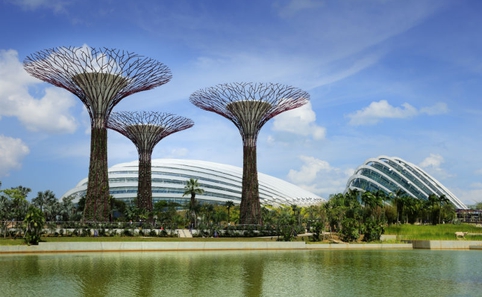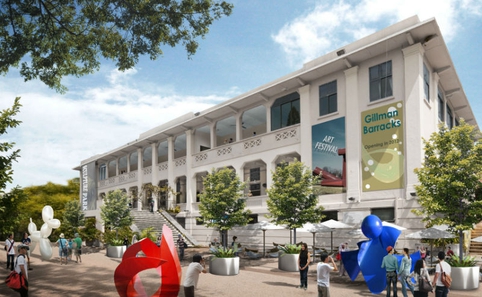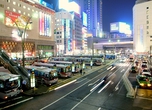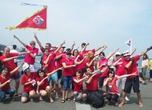Only in Singapore
Time Out Singapore takes you through the island-nation’s efforts at luring sightseers

Marina Bay Sands ©Timothy Hursely
Posted: Fri May 10 2013
Often considered as the gateway to Southeast Asia and Australia, Singapore has been hard at work in recent years to convince tourists to see it as something more than an international transport hub. Though it's declared tourism as one of the key economic pillars of its growth, the country has had to contend with a lack of any landmarks, natural or historical, to rival destinations like Thailand, Vietnam, or the recently relaxed Myanmar. Enter the government’s tourism masterplans: inked periodically by the Singapore Tourism Board (STB), these dossiers map the growth aims, paths and goals for the tiny nation-state’s development as a travel destination. The latest – announced by Minister for Trade and Industry, Mr Lim Hng Kiang, in 2005 – charted a plan for Singapore’s tourism receipts to triple to $30 billion, for visitor arrivals to double to 17 million, and for 100,000 new jobs to be created in the sector in the next 10 years. All this, with an injection of $2 billion via the Tourism Development fund.
Join us on a brief tour of some of the recent fruits of this grand plan:
Marina Bay Sands

The pièce de résistance of the country’s Singapore River skyline, Marina Bay Sands (MBS) is one of two Integrated Resorts in Singapore: large-scale, multi-function entertainment havens (including the country’s first legal casinos) that were set up to help it meet its economic and tourism targets. Branding itself as a destination that’ll deliver ‘once-in-a-lifetime experiences’, the three-tower complex is home to a careful edit of shops, celebrity chef restaurants, exclusive clubs, the bowl-shaped ArtScience Museum, two theatres, and a 150-metre infinity-edge pool on its cantilevered rooftop (pictured above) that serves the 2,561 hotel rooms and suites.
Gardens by the Bay

Reinforcing Singapore’s ‘Garden City’ image, this outdoor recreation space sits on reclaimed land next to Marina Bay Sands, offering tourists a little slice of greenery in the city. The centrepieces of Gardens by the Bay are the Flower Dome and Cloud Forest, two domed conservatories that recreate environmental features from areas including the Mediterranean and tropical mountain regions. Equally notable are the series of man-made, tree-like structures known as Supertrees, which simulate the functions of real trees using green technologies like photovoltaic cells that mimic photosynthesis.
Resorts World Sentosa

The other of the city’s Integrated Resorts, this Malaysian Genting-owned destination on the country’s southern Sentosa Island is a hub for world-famous names like Universal Studios and the Hard Rock Hotel. The recently-opened Marine Life Park attracted the ire of wildlife groups for its controversial decision to capture Indo-Pacific bottlenose dolphins in the name of conservation, but it's a must-see all the same. Why? Because it boasts the world’s largest viewing aquarium, housing more than 800 species of marine animals – including a population of 200 sharks.
Gillman Barracks

It's less bombastic than the other places mentioned in our list, but Gillman Barracks plays a key role in Singapore’s mission to establish itself as a destination for contemporary art. This former military camp is now home to an illustrious roster of international art galleries, including Japan’s own Mizuma Gallery and Ota Fine Arts, with the hope that these renowned names will lend cred to the country’s artistic ambitions.
As impressive as Singapore’s tourism portfolio looks to the naked eye, there are some caveats – the inevitable by-products of a tourism industry built by brick and mortar. From a local’s perspective, the city has lost a chunk of its authenticity and charm; the lack of resources and land – and goal-oriented view of developing packaged destinations – also unfortunately mean that everything ends up being planned to the n’th degree. They don’t call us the air-conditioned nation for nothing!
Read more at Time Out Singapore
Tags:
Tweets
- About Us |
- Work for Time Out |
- Send us info |
- Advertising |
- Mobile edition |
- Terms & Conditions |
- Privacy policy |
- Contact Us
Copyright © 2014 Time Out Tokyo






Add your comment